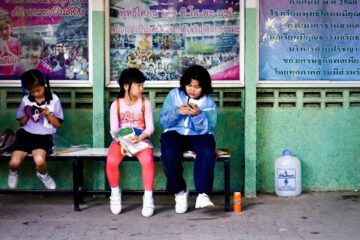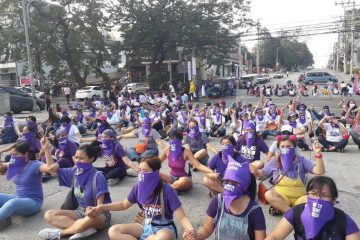Technology-related abuses in the Philippines makes online safety all the more paramount in securing a safe digital space for women, as reflected in Take Back the Tech Philippines’ 2019 report.
From social media ‘trolls’ barbarizing women sharing dissent online and apps utilised to commodify women, moves targeting women’s civil liberties encroach even the spaces powered by information and communications technology (ICT).
Such offences as cyberharassment, sextortion, invasion of privacy, and surveillance are among the manifestations of online gender-based violence which the Association of Progressive Communications (2017) defines as the “acts of violence against women (VAW) that are committed, abetted or aggravated, in part or fully, by the use of ICTs such as phones, the internet, social media platforms, and email.”
In 2019, media reports recorded through Take Back the Tech Philippines revealed a total of 49 cases of OGBV which were most frequently reported from the National Capital Region (29%) followed by Central Visayas (17%), Western Visayas (10%) and CALABARZON (10%).
Based on the reports, almost half of the victims are aged 18-30 (49%), 42% fall under 18, and 9% are 31-45 years old. Emotional (24%), sexual (23%), and physical harm (19%) were the top types of harm caused by perpetrators.
Among the offenses were repeated harassment (25%), taking photos/videos without consent (22%), and dissemination of the victims’ private information (21%). These were most commonly committed with the use of mobile phones (29%) through videos (25%) and online chats (15%) by someone known to the victim (73%).
The perpetrator is no stranger
Such is the case for an 18 year-old woman from Bulacan. She received multiple threats from her former partner online which led her to approach the police in August 2019.
During their 9-month relationship, the woman got pregnant and had a miscarriage. Physical and verbal attacks led her to ultimately terminate their relationship. Despite being blocked, the man persistently messaged her and demanded money or else he will release her private materials online. “He used my phone to send my photos to his account online,” said the victim.
After reaching out to the police, an entrapment operation was facilitated leading to the perpetrator’s arrest. The man claimed that the woman took the photos and videos herself and was ‘aware of what he was doing’. However, she continued to press charges for the threats.
Seeking justice
Of the 49 cases, 46 were reported to the police, investigation was initiated in 41 cases, and only 14 cases were tallied where the victim confronted their aggressors. This low number may reflect the victims’ reluctance to engage with the investigators out of the fear and shame they may further face in pursuing cases that require account of highly personal information.
As ICT makes it possible for abuses to reach women online, it may also be “the fluidity of offline and online spaces [that makes] evidence and tracking difficult,” according to the Swedish International Development Cooperation Agency (2019). Going after perpetrators entails financial cost and requires diligent follow up on various state authorities and lawyers who need a deeper understanding of how ICT works and on why technology-mediated violence against women is a crime against the public.
The rife technology-related abuses in the Philippines makes online safety all the more paramount in securing a safe digital space for women. Mapping these OGBV cases through the TBTT reporting mechanism is only one of the ways to make use of the internet’s influence in bolstering women’s rights—to express and amplify themselves without being muzzled.#




0 Comments